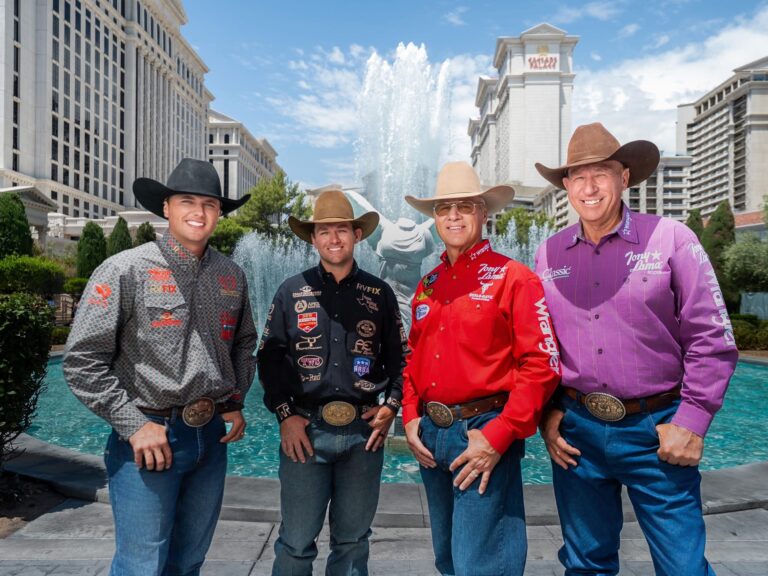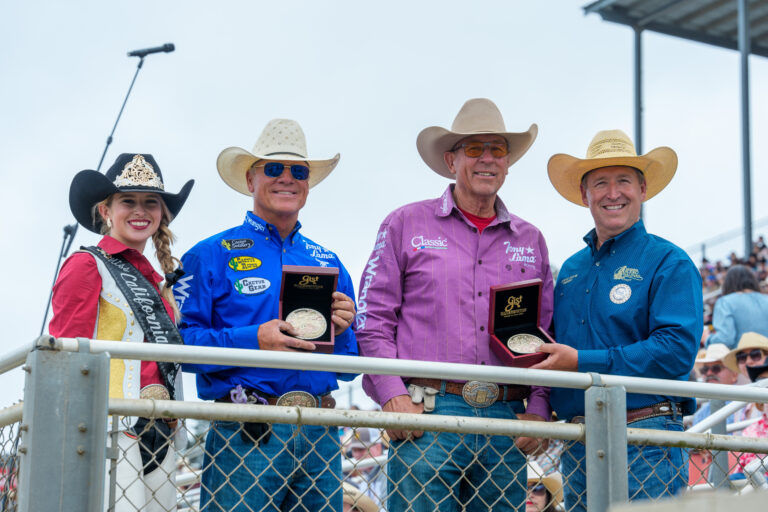This last year the core patent ran out, so all rope companies can use that technology now. I’ve endorsed Cactus Ropes for 20 years, and they, too, have started putting cores in their ropes. So this is the first time I’ve ever used a rope with a core in it. I didn’t know the difference. I always liked the old ropes. But after using them—wow—having a core inside a rope sure makes a difference.
I’ve talked to some of the guys who don’t like ropes with a core in them. They’re used to the other ropes, and don’t like the different feel. That’s fine, since the feel of ropes is all about personal preference, and what works for you. Right at first, they felt different and a little strange to me, too.
But in a short period of time, I’ve adapted to it. Now I like ropes with a core in them better. I find that the ropes with a core in them last longer, and stay truer. These new ropes last twice as long. And in extreme conditions—hot and cold—the weather doesn’t affect the ropes as much as it used to.
Some of the guys who used to use ropes with a core would tease us that we didn’t use one. It didn’t really bother me. I would tease them back, and ask why they had to put their rope on a post and stretch it all the time. All I use now is the Cactus Ropes with the core in them. It’s a nice change after 40-some years of using the same kind of rope. It’s a big change, but I’m really liking the difference and realizing the benefits.
I go into a lot of Western stores every year. The rope displays these days are amazing. There are so many ropes to choose from. Cactus and Classic are the biggest, but it again all goes back to what works best for you. My favorite ropes now are the Swagger and the Thrilla.
I’ve always used the hardest lay of rope. They call it a medium hard, and it’s the hardest lay they make. I’ve used the hardest rope since I was a kid using King Ropes and Perry Ropes. One end of the 500-foot coil would be soft, so they used that for head ropes. I got used to the hardest ropes from the beginning, and never switched.
I find that the ropes with the cores in them are more consistent than the others. It’s like you’re twisting the rope around a foundation—the core—and it basically stabilizes it. The other ropes are hollow in the center. These ropes I use now are twisted around a core, and it’s just kind of amazing how much stability it gives the rope. The core was a great invention.
I’ve been pretty spoiled over the years by being close to the rope maker who makes my ropes. Barry Berg is our rope maker at Cactus. Before that, I was close to Clint Bigbee, the rope maker at Running P Ropes. So I’ve been pretty lucky to be able to be on the inner circle of the rope designs—the recipes and equations of weight, balance, and stiffness, poly blended vs straight nylon, different diameters, etc… I’ve been fortunate to be on the inner circle of the conversation as ropes have evolved.
Ropes are my tool. I can swing one, and tell you what I do and don’t like about it. I’ve been back and forth with guys like Barry and Clint for a lot of years, and it’s fun working with great people like those guys. Barry’s always busy designing the next rope. Rope-making is a never-ending process, and it’s a fun one. I love the end product. I always love getting a batch of new ropes. It’s just fun when that box arrives. It feels like Christmas every time.








